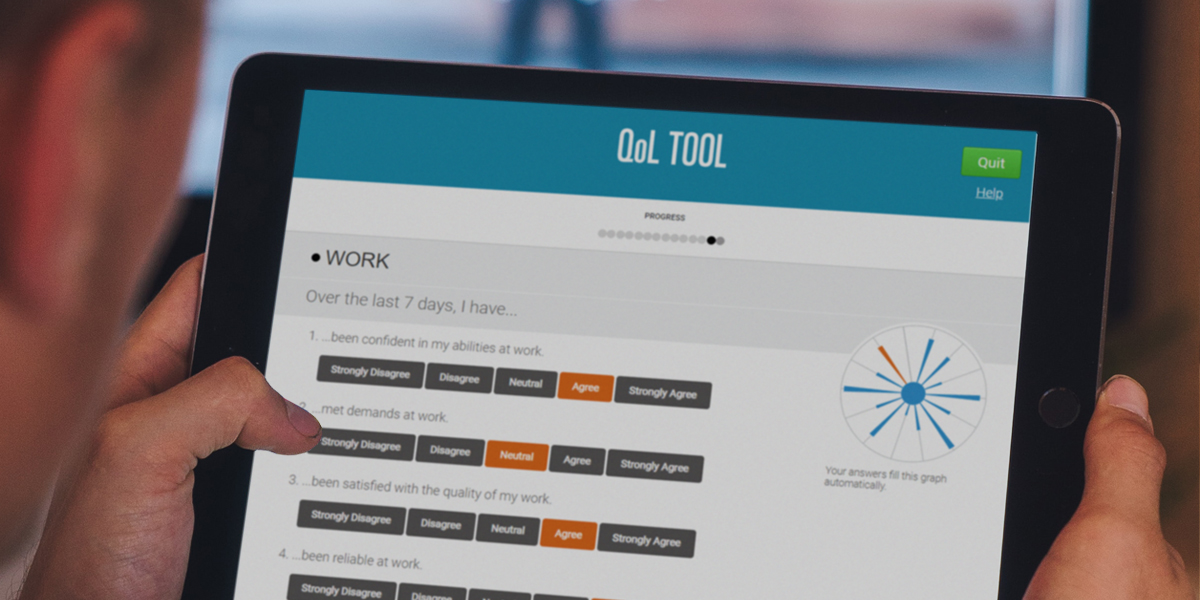The Quality of Life in Bipolar Disorder (or, QoL.BD) is a measure of aspects of quality of life that are important to people with lived experience of bipolar disorder. It was developed by our very own CREST.BD team, and to date is the only bipolar disorder specific quality of life scale. In the ten years since the QoL.BD was released, it has been translated in over 20 languages, including Chinese, Spanish, and Iranian. Each time the QoL.BD gets adapted to a new language, it is important to evaluate its validity and reliability (two terms describing its measurement properties). This is a critical step in the development process called psychometric evaluation: it ensures that this new version is measuring the same thing, in the same way, as the original English scale.
The same psychometric evaluation principles apply when adapting the delivery mode of the QoL.BD (that is, the format in which you complete the measure). The original QoL.BD is what we call a ‘pen-and-paper’ instrument, which has some limitations. For example, the person interested in the results needs to add up responses by hand, which can lead to mistakes. If you conduct a research study using the pen-and-paper QoL.BD, you would need to find a place to store the completed questionnaires, which can get tricky with a large study (or a small office). Relying on pen-and-paper scales can limit the ability of people in rural and remote locations to participate in research, or to share their QoL.BD scores with their supports. Web-based versions of scales are typically more practical and user friendly, and so, the QoL Tool (an online version of the QoL.BD) was developed.
You might notice that the QoL Tool looks a little different to the original pen-and-paper measure. We added in some new features on the basis of community feedback to make it more user-friendly and engaging, such as adding a display feature that shows your results for each life area (or ‘domain’) as you progress through the questionnaire. Just like when a scale is translated into a different language, these kinds of changes can impact the consistency and accuracy of a measurement instrument. In order to confirm that the QoL Tool was a reliable and valid measure of quality of life for people with bipolar disorder, we performed a psychometric evaluation study.
A total of 498 people with bipolar disorder who used the QoL Tool gave us permission to use their data for this research (thank you if you were one of those people!). With this, we were able to demonstrate the QoL Tool is internally consistent (that is, people’s answers to items from the same domain tended to be similar). We also performed an exploratory factor analysis, a statistical method used to see how items group together – we wanted to see if we could replicate the same 12 core domains (sleep, physical health, mood, cognition, home, self-esteem, leisure, relationships, spiritual, money, independence, and identity) as the original pen-and-paper scale.
Overall, the psychometric properties for the QoL Tool are consistent with the pen-and-paper QoL.BD. This suggests that the same quality of life domains are being measured by the QoL Tool, and that it produces a reliable and consistent estimate of how people are faring. This is great news for our Bipolar Bridges project, which will be incorporating the QoL Tool into a mobile-phone based platform for monitoring and improving quality of life.
You can read our open-access publication on the web-based adaptation and psychometric evaluation of the QoL Tool here:
Sign up to our newsletter for updates about the Bipolar Bridges app development project, or try the QoL Tool for yourself!




Leave a Reply